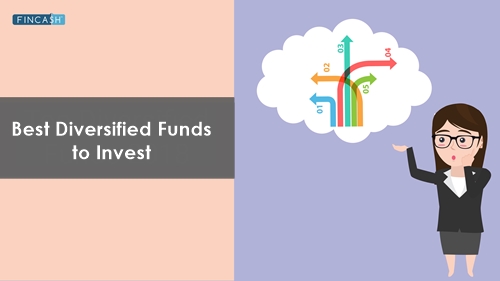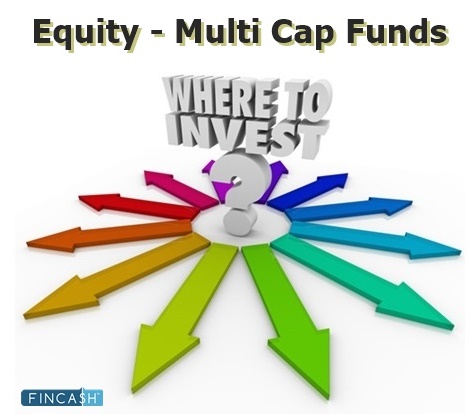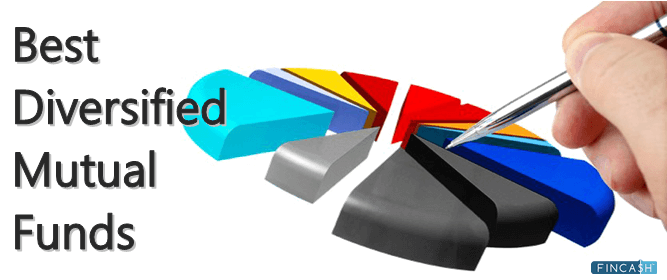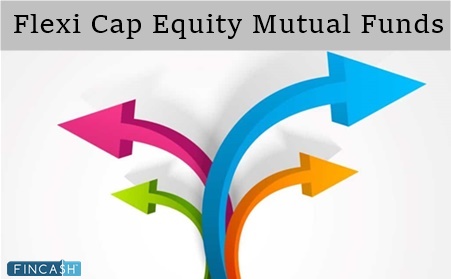Best Index Mutual Funds for Investments 2025
Index Funds are no longer just a Western concept — they’re becoming increasingly popular among Indian investors. In fact, index funds and ETFs now account for over 17% of India’s mutual fund industry’s AUM (Assets Under Management) as of 2025, up from less than 4% a decade ago (AMFI data).
Why this surge? Because index funds make Investing simple. Instead of tracking individual stocks, they mirror an index like the Nifty 50 or Sensex, giving investors exposure to India’s top companies with very low costs. Historically, the Nifty 50 TRI has delivered ~13–14% CAGR over the last 10 years, proving that passive investing can match or even outperform many actively managed funds.

But here’s the catch — not all index funds are the same. From broad market funds to Next 50, sectoral, and even global index funds, each comes with different risk-return profiles. Choosing the right one depends on your goals.
This article will break down the types of index funds in India, compare their performance, and help you understand which option could work best for your Portfolio.
What is an Index Fund?
An index fund is a type of mutual fund or ETF that tracks a market index. For example -- A Nifty 50 Index Fund holds the same 50 companies in the same proportion as the Nifty 50 index.
If Nifty 50 rises by 1%, the fund’s NAV will also rise by nearly 1% (minus expenses).
Unlike active funds, index funds do not aim to beat the market. Instead, they match the market’s performance with minimal costs.
Why Index Funds Are Becoming Popular in India
Low Cost (Expense Ratio) – Since there’s no active management, index funds charge as low as 0.1% – 0.3%, compared to 1% – 2% for active funds.
Market Outperformance by Passive Investing – Many active funds are struggling to beat their benchmarks consistently. Data from SPIVA reports shows over 85% of Large cap funds underperform their benchmarks over 10 years.
Transparency – You always know what you’re investing in.
Ideal for Long-Term Wealth Creation – Perfect for SIP investing and Retirement planning.
Fund Selection Methodology used to find 9 funds
Top 9 Best Performing Index Funds FY 25 - 26
Fund NAV Net Assets (Cr) 3 MO (%) 6 MO (%) 1 YR (%) 3 YR (%) 5 YR (%) 2024 (%) Nippon India Index Fund - Sensex Plan Growth ₹43.6668
↑ 0.23 ₹957 6.2 5.7 5.6 11.6 14.4 8.9 LIC MF Index Fund Sensex Growth ₹160.236
↑ 0.83 ₹92 6 5.3 4.9 11.1 13.8 8.2 Franklin India Index Fund Nifty Plan Growth ₹211.499
↑ 1.36 ₹775 5.9 6.3 6.7 12.4 15.1 9.5 IDBI Nifty Index Fund Growth ₹36.2111
↓ -0.02 ₹208 9.1 11.9 16.2 20.3 11.7 Nippon India Index Fund - Nifty Plan Growth ₹44.4814
↑ 0.26 ₹2,864 5.9 6.3 6.8 12.5 15 9.4 ICICI Prudential Nifty Next 50 Index Fund Growth ₹60.3553
↑ 0.13 ₹8,139 2.3 2.5 -5.3 16.1 16.8 27.2 IDBI Nifty Junior Index Fund Growth ₹50.9389
↑ 0.11 ₹102 2.3 2.6 -5.1 15.8 16.7 26.9 LIC MF Index Fund Nifty Growth ₹144.626
↑ 0.84 ₹346 5.7 5.9 6.2 11.9 14.6 8.8 Bandhan Nifty Fund Growth ₹56.4206
↑ 0.33 ₹2,111 5.8 6.2 6.6 12.4 15.2 9.2 Note: Returns up to 1 year are on absolute basis & more than 1 year are on CAGR basis. as on 5 Dec 25 Research Highlights & Commentary of 9 Funds showcased
Commentary Nippon India Index Fund - Sensex Plan LIC MF Index Fund Sensex Franklin India Index Fund Nifty Plan IDBI Nifty Index Fund Nippon India Index Fund - Nifty Plan ICICI Prudential Nifty Next 50 Index Fund IDBI Nifty Junior Index Fund LIC MF Index Fund Nifty Bandhan Nifty Fund Point 1 Upper mid AUM (₹957 Cr). Bottom quartile AUM (₹92 Cr). Lower mid AUM (₹775 Cr). Bottom quartile AUM (₹208 Cr). Top quartile AUM (₹2,864 Cr). Highest AUM (₹8,139 Cr). Bottom quartile AUM (₹102 Cr). Lower mid AUM (₹346 Cr). Upper mid AUM (₹2,111 Cr). Point 2 Established history (15+ yrs). Established history (23+ yrs). Oldest track record among peers (25 yrs). Established history (15+ yrs). Established history (15+ yrs). Established history (15+ yrs). Established history (15+ yrs). Established history (23+ yrs). Established history (15+ yrs). Point 3 Rating: 2★ (upper mid). Rating: 1★ (lower mid). Rating: 1★ (lower mid). Rating: 1★ (bottom quartile). Rating: 1★ (bottom quartile). Top rated. Rating: 5★ (top quartile). Rating: 1★ (bottom quartile). Rating: 2★ (upper mid). Point 4 Risk profile: Moderately High. Risk profile: Moderately High. Risk profile: Moderately High. Risk profile: Moderately High. Risk profile: Moderately High. Risk profile: Moderately High. Risk profile: Moderately High. Risk profile: Moderately High. Risk profile: Moderately High. Point 5 5Y return: 14.37% (bottom quartile). 5Y return: 13.82% (bottom quartile). 5Y return: 15.09% (upper mid). 5Y return: 11.74% (bottom quartile). 5Y return: 15.02% (lower mid). 5Y return: 16.83% (top quartile). 5Y return: 16.74% (top quartile). 5Y return: 14.61% (lower mid). 5Y return: 15.18% (upper mid). Point 6 3Y return: 11.61% (bottom quartile). 3Y return: 11.10% (bottom quartile). 3Y return: 12.44% (lower mid). 3Y return: 20.28% (top quartile). 3Y return: 12.51% (upper mid). 3Y return: 16.06% (top quartile). 3Y return: 15.79% (upper mid). 3Y return: 11.89% (bottom quartile). 3Y return: 12.40% (lower mid). Point 7 1Y return: 5.55% (lower mid). 1Y return: 4.87% (bottom quartile). 1Y return: 6.73% (upper mid). 1Y return: 16.16% (top quartile). 1Y return: 6.80% (top quartile). 1Y return: -5.27% (bottom quartile). 1Y return: -5.09% (bottom quartile). 1Y return: 6.16% (lower mid). 1Y return: 6.62% (upper mid). Point 8 1M return: 2.70% (top quartile). 1M return: 2.65% (upper mid). 1M return: 2.35% (upper mid). 1M return: 3.68% (top quartile). 1M return: 2.31% (lower mid). 1M return: -2.10% (bottom quartile). 1M return: -2.11% (bottom quartile). 1M return: 2.25% (bottom quartile). 1M return: 2.29% (lower mid). Point 9 Alpha: -0.50 (top quartile). Alpha: -1.15 (bottom quartile). Alpha: -0.59 (upper mid). Alpha: -1.03 (lower mid). Alpha: -0.48 (top quartile). Alpha: -1.03 (bottom quartile). Alpha: -0.86 (lower mid). Alpha: -1.06 (bottom quartile). Alpha: -0.64 (upper mid). Point 10 Sharpe: 0.07 (lower mid). Sharpe: 0.01 (bottom quartile). Sharpe: 0.11 (upper mid). Sharpe: 1.04 (top quartile). Sharpe: 0.12 (top quartile). Sharpe: -0.25 (bottom quartile). Sharpe: -0.24 (bottom quartile). Sharpe: 0.07 (lower mid). Sharpe: 0.10 (upper mid). Nippon India Index Fund - Sensex Plan
LIC MF Index Fund Sensex
Franklin India Index Fund Nifty Plan
IDBI Nifty Index Fund
Nippon India Index Fund - Nifty Plan
ICICI Prudential Nifty Next 50 Index Fund
IDBI Nifty Junior Index Fund
LIC MF Index Fund Nifty
Bandhan Nifty Fund
All the funds mentioned above are ideal, we are giving you detailed analysis of 5 funds.
The primary investment objective of the scheme is to replicate the composition of the Sensex, with a view to generate returns that are commensurate with the performance of the Sensex, subject to tracking errors. Research Highlights for Nippon India Index Fund - Sensex Plan Below is the key information for Nippon India Index Fund - Sensex Plan Returns up to 1 year are on The main investment objective of the fund is to generate returns commensurate with the performance of the index either Nifty / Sensex based on the plans by investing in the respective index stocks subject to tracking errors. Research Highlights for LIC MF Index Fund Sensex Below is the key information for LIC MF Index Fund Sensex Returns up to 1 year are on The Investment Objective of the Scheme is to invest in companies whose securities are included in the Nifty and subject to tracking errors, endeavouring to attain results commensurate with the Nifty 50 under NSENifty Plan Research Highlights for Franklin India Index Fund Nifty Plan Below is the key information for Franklin India Index Fund Nifty Plan Returns up to 1 year are on The investment objective of the scheme is to invest in the stocks and equity related instruments comprising the S&P CNX Nifty Index in the same weights as these stocks represented in the Index with the intent to replicate the performance of the Total Returns Index of S&P CNX Nifty index. The scheme will adopt a passive investment strategy and will seek to achieve the investment objective by minimizing the tracking error between the S&P CNX Nifty index (Total Returns Index) and the scheme. Research Highlights for IDBI Nifty Index Fund Below is the key information for IDBI Nifty Index Fund Returns up to 1 year are on The primary investment objective of the scheme is to replicate the composition of the Nifty 50, with a view to generate returns that are commensurate with the
performance of the Nifty 50, subject to tracking errors. Research Highlights for Nippon India Index Fund - Nifty Plan Below is the key information for Nippon India Index Fund - Nifty Plan Returns up to 1 year are on 1. Nippon India Index Fund - Sensex Plan
Nippon India Index Fund - Sensex Plan
Growth Launch Date 28 Sep 10 NAV (05 Dec 25) ₹43.6668 ↑ 0.23 (0.52 %) Net Assets (Cr) ₹957 on 31 Oct 25 Category Others - Index Fund AMC Nippon Life Asset Management Ltd. Rating ☆☆ Risk Moderately High Expense Ratio 0.49 Sharpe Ratio 0.07 Information Ratio -10.72 Alpha Ratio -0.5 Min Investment 5,000 Min SIP Investment 100 Exit Load 0-7 Days (0.25%),7 Days and above(NIL) Growth of 10,000 investment over the years.
Date Value 30 Nov 20 ₹10,000 30 Nov 21 ₹12,976 30 Nov 22 ₹14,430 30 Nov 23 ₹15,409 30 Nov 24 ₹18,473 30 Nov 25 ₹19,976 Returns for Nippon India Index Fund - Sensex Plan
absolute basis & more than 1 year are on CAGR (Compound Annual Growth Rate) basis. as on 5 Dec 25 Duration Returns 1 Month 2.7% 3 Month 6.2% 6 Month 5.7% 1 Year 5.6% 3 Year 11.6% 5 Year 14.4% 10 Year 15 Year Since launch 10.2% Historical performance (Yearly) on absolute basis
Year Returns 2024 8.9% 2023 19.5% 2022 5% 2021 22.4% 2020 16.6% 2019 14.2% 2018 6.2% 2017 27.9% 2016 2% 2015 -4.7% Fund Manager information for Nippon India Index Fund - Sensex Plan
Name Since Tenure Himanshu Mange 23 Dec 23 1.86 Yr. Data below for Nippon India Index Fund - Sensex Plan as on 31 Oct 25
Asset Allocation
Asset Class Value Cash 0.08% Equity 99.92% Top Securities Holdings / Portfolio
Name Holding Value Quantity HDFC Bank Ltd (Financial Services)
Equity, Since 31 Oct 10 | HDFCBANK15% ₹144 Cr 1,460,103
↑ 4,837 Reliance Industries Ltd (Energy)
Equity, Since 31 Oct 10 | RELIANCE10% ₹97 Cr 651,549
↑ 2,159 ICICI Bank Ltd (Financial Services)
Equity, Since 31 Oct 10 | 53217410% ₹92 Cr 687,526
↑ 2,277 Bharti Airtel Ltd (Communication Services)
Equity, Since 31 Oct 10 | BHARTIARTL6% ₹54 Cr 263,558
↑ 873 Infosys Ltd (Technology)
Equity, Since 31 Oct 10 | INFY5% ₹51 Cr 344,036
↑ 1,140 Larsen & Toubro Ltd (Industrials)
Equity, Since 29 Feb 12 | LT5% ₹45 Cr 112,586
↑ 373 ITC Ltd (Consumer Defensive)
Equity, Since 29 Feb 12 | ITC4% ₹39 Cr 928,712
↑ 3,076 State Bank of India (Financial Services)
Equity, Since 31 Oct 10 | SBIN4% ₹37 Cr 399,984
↑ 1,325 Axis Bank Ltd (Financial Services)
Equity, Since 31 Dec 13 | 5322154% ₹34 Cr 274,838
↑ 911 Tata Consultancy Services Ltd (Technology)
Equity, Since 31 Oct 10 | TCS3% ₹30 Cr 97,552
↑ 323 2. LIC MF Index Fund Sensex
LIC MF Index Fund Sensex
Growth Launch Date 14 Nov 02 NAV (05 Dec 25) ₹160.236 ↑ 0.83 (0.52 %) Net Assets (Cr) ₹92 on 31 Oct 25 Category Others - Index Fund AMC LIC Mutual Fund Asset Mgmt Co Ltd Rating ☆ Risk Moderately High Expense Ratio 0.98 Sharpe Ratio 0.01 Information Ratio -9.83 Alpha Ratio -1.15 Min Investment 5,000 Min SIP Investment 1,000 Exit Load 0-1 Months (1%),1 Months and above(NIL) Growth of 10,000 investment over the years.
Date Value 30 Nov 20 ₹10,000 30 Nov 21 ₹12,902 30 Nov 22 ₹14,282 30 Nov 23 ₹15,226 30 Nov 24 ₹18,152 30 Nov 25 ₹19,500 Returns for LIC MF Index Fund Sensex
absolute basis & more than 1 year are on CAGR (Compound Annual Growth Rate) basis. as on 5 Dec 25 Duration Returns 1 Month 2.6% 3 Month 6% 6 Month 5.3% 1 Year 4.9% 3 Year 11.1% 5 Year 13.8% 10 Year 15 Year Since launch 13.3% Historical performance (Yearly) on absolute basis
Year Returns 2024 8.2% 2023 19% 2022 4.6% 2021 21.9% 2020 15.9% 2019 14.6% 2018 5.6% 2017 27.4% 2016 1.6% 2015 -5.4% Fund Manager information for LIC MF Index Fund Sensex
Name Since Tenure Sumit Bhatnagar 3 Oct 23 2.08 Yr. Data below for LIC MF Index Fund Sensex as on 31 Oct 25
Asset Allocation
Asset Class Value Cash 0.22% Equity 99.78% Top Securities Holdings / Portfolio
Name Holding Value Quantity HDFC Bank Ltd (Financial Services)
Equity, Since 31 Mar 09 | HDFCBANK15% ₹14 Cr 140,423
↓ -760 Reliance Industries Ltd (Energy)
Equity, Since 31 Mar 09 | RELIANCE10% ₹9 Cr 62,596
↓ -190 ICICI Bank Ltd (Financial Services)
Equity, Since 30 Apr 09 | 53217410% ₹9 Cr 66,051
↓ -772 Bharti Airtel Ltd (Communication Services)
Equity, Since 30 Apr 09 | BHARTIARTL6% ₹5 Cr 25,356
↑ 251 Infosys Ltd (Technology)
Equity, Since 31 Mar 09 | INFY5% ₹5 Cr 33,021
↓ -214 Larsen & Toubro Ltd (Industrials)
Equity, Since 31 Mar 09 | LT5% ₹4 Cr 10,795
↑ 113 ITC Ltd (Consumer Defensive)
Equity, Since 30 Sep 11 | ITC4% ₹4 Cr 88,867
↓ -1,360 State Bank of India (Financial Services)
Equity, Since 31 Mar 09 | SBIN4% ₹4 Cr 38,384
↑ 720 Axis Bank Ltd (Financial Services)
Equity, Since 31 Dec 13 | 5322154% ₹3 Cr 26,337
↑ 133 Kotak Mahindra Bank Ltd (Financial Services)
Equity, Since 30 Jun 17 | KOTAKBANK3% ₹3 Cr 13,593
↑ 298 3. Franklin India Index Fund Nifty Plan
Franklin India Index Fund Nifty Plan
Growth Launch Date 4 Aug 00 NAV (05 Dec 25) ₹211.499 ↑ 1.36 (0.65 %) Net Assets (Cr) ₹775 on 31 Oct 25 Category Others - Index Fund AMC Franklin Templeton Asst Mgmt(IND)Pvt Ltd Rating ☆ Risk Moderately High Expense Ratio 0.63 Sharpe Ratio 0.11 Information Ratio -3.93 Alpha Ratio -0.59 Min Investment 5,000 Min SIP Investment 500 Exit Load 0-30 Days (1%),30 Days and above(NIL) Growth of 10,000 investment over the years.
Date Value 30 Nov 20 ₹10,000 30 Nov 21 ₹13,104 30 Nov 22 ₹14,558 30 Nov 23 ₹15,668 30 Nov 24 ₹18,880 30 Nov 25 ₹20,629 Returns for Franklin India Index Fund Nifty Plan
absolute basis & more than 1 year are on CAGR (Compound Annual Growth Rate) basis. as on 5 Dec 25 Duration Returns 1 Month 2.4% 3 Month 5.9% 6 Month 6.3% 1 Year 6.7% 3 Year 12.4% 5 Year 15.1% 10 Year 15 Year Since launch 12.8% Historical performance (Yearly) on absolute basis
Year Returns 2024 9.5% 2023 20.2% 2022 4.9% 2021 24.3% 2020 14.7% 2019 12% 2018 3.2% 2017 28.3% 2016 3.3% 2015 -3.6% Fund Manager information for Franklin India Index Fund Nifty Plan
Name Since Tenure Sandeep Manam 18 Oct 21 4.04 Yr. Shyam Sriram 26 Sep 24 1.1 Yr. Data below for Franklin India Index Fund Nifty Plan as on 31 Oct 25
Asset Allocation
Asset Class Value Cash 0.21% Equity 99.79% Top Securities Holdings / Portfolio
Name Holding Value Quantity HDFC Bank Ltd (Financial Services)
Equity, Since 31 Jan 03 | HDFCBANK13% ₹99 Cr 1,001,551
↓ -1,357 Reliance Industries Ltd (Energy)
Equity, Since 31 Jan 03 | RELIANCE9% ₹66 Cr 443,929
↓ -602 ICICI Bank Ltd (Financial Services)
Equity, Since 31 Jan 10 | ICICIBANK8% ₹63 Cr 467,952
↓ -634 Bharti Airtel Ltd (Communication Services)
Equity, Since 31 Mar 04 | BHARTIARTL5% ₹37 Cr 178,731
↓ -242 Infosys Ltd (Technology)
Equity, Since 29 Feb 12 | INFY5% ₹35 Cr 236,249
↓ -320 Larsen & Toubro Ltd (Industrials)
Equity, Since 30 Jun 12 | LT4% ₹31 Cr 77,011
↓ -104 ITC Ltd (Consumer Defensive)
Equity, Since 31 Mar 11 | ITC3% ₹27 Cr 631,809
↓ -856 State Bank of India (Financial Services)
Equity, Since 31 Jan 03 | SBIN3% ₹25 Cr 272,079
↓ -369 Axis Bank Ltd (Financial Services)
Equity, Since 30 Jun 09 | 5322153% ₹23 Cr 187,795
↓ -255 Tata Consultancy Services Ltd (Technology)
Equity, Since 28 Feb 05 | TCS3% ₹20 Cr 66,973
↓ -91 4. IDBI Nifty Index Fund
IDBI Nifty Index Fund
Growth Launch Date 25 Jun 10 NAV (28 Jul 23) ₹36.2111 ↓ -0.02 (-0.06 %) Net Assets (Cr) ₹208 on 30 Jun 23 Category Others - Index Fund AMC IDBI Asset Management Limited Rating ☆ Risk Moderately High Expense Ratio 0.9 Sharpe Ratio 1.04 Information Ratio -3.93 Alpha Ratio -1.03 Min Investment 5,000 Min SIP Investment 500 Exit Load NIL Growth of 10,000 investment over the years.
Date Value 30 Nov 20 ₹10,000 30 Nov 21 ₹13,029 30 Nov 22 ₹14,443 Returns for IDBI Nifty Index Fund
absolute basis & more than 1 year are on CAGR (Compound Annual Growth Rate) basis. as on 5 Dec 25 Duration Returns 1 Month 3.7% 3 Month 9.1% 6 Month 11.9% 1 Year 16.2% 3 Year 20.3% 5 Year 11.7% 10 Year 15 Year Since launch 10.3% Historical performance (Yearly) on absolute basis
Year Returns 2024 2023 2022 2021 2020 2019 2018 2017 2016 2015 Fund Manager information for IDBI Nifty Index Fund
Name Since Tenure Data below for IDBI Nifty Index Fund as on 30 Jun 23
Asset Allocation
Asset Class Value Top Securities Holdings / Portfolio
Name Holding Value Quantity 5. Nippon India Index Fund - Nifty Plan
Nippon India Index Fund - Nifty Plan
Growth Launch Date 28 Sep 10 NAV (05 Dec 25) ₹44.4814 ↑ 0.26 (0.58 %) Net Assets (Cr) ₹2,864 on 31 Oct 25 Category Others - Index Fund AMC Nippon Life Asset Management Ltd. Rating ☆ Risk Moderately High Expense Ratio 0.49 Sharpe Ratio 0.12 Information Ratio -12.29 Alpha Ratio -0.48 Min Investment 5,000 Min SIP Investment 100 Exit Load 0-7 Days (0.25%),7 Days and above(NIL) Growth of 10,000 investment over the years.
Date Value 30 Nov 20 ₹10,000 30 Nov 21 ₹13,082 30 Nov 22 ₹14,490 30 Nov 23 ₹15,617 30 Nov 24 ₹18,816 30 Nov 25 ₹20,588 Returns for Nippon India Index Fund - Nifty Plan
absolute basis & more than 1 year are on CAGR (Compound Annual Growth Rate) basis. as on 5 Dec 25 Duration Returns 1 Month 2.3% 3 Month 5.9% 6 Month 6.3% 1 Year 6.8% 3 Year 12.5% 5 Year 15% 10 Year 15 Year Since launch 10.3% Historical performance (Yearly) on absolute basis
Year Returns 2024 9.4% 2023 20.5% 2022 4.6% 2021 24% 2020 14.3% 2019 12.3% 2018 3.5% 2017 29% 2016 2.5% 2015 -3.9% Fund Manager information for Nippon India Index Fund - Nifty Plan
Name Since Tenure Himanshu Mange 23 Dec 23 1.86 Yr. Data below for Nippon India Index Fund - Nifty Plan as on 31 Oct 25
Asset Allocation
Asset Class Value Cash 0.04% Equity 99.96% Top Securities Holdings / Portfolio
Name Holding Value Quantity HDFC Bank Ltd (Financial Services)
Equity, Since 31 Oct 10 | HDFCBANK13% ₹366 Cr 3,705,508
↑ 78,334 Reliance Industries Ltd (Energy)
Equity, Since 31 Oct 10 | RELIANCE9% ₹244 Cr 1,642,437
↑ 34,720 ICICI Bank Ltd (Financial Services)
Equity, Since 31 Oct 10 | ICICIBANK8% ₹233 Cr 1,731,316
↑ 36,599 Bharti Airtel Ltd (Communication Services)
Equity, Since 31 Oct 10 | BHARTIARTL5% ₹136 Cr 661,263
↑ 13,979 Infosys Ltd (Technology)
Equity, Since 31 Oct 10 | INFY5% ₹130 Cr 874,068
↑ 18,477 Larsen & Toubro Ltd (Industrials)
Equity, Since 29 Feb 12 | LT4% ₹115 Cr 284,923
↑ 6,023 ITC Ltd (Consumer Defensive)
Equity, Since 29 Feb 12 | ITC3% ₹98 Cr 2,337,549
↑ 49,415 State Bank of India (Financial Services)
Equity, Since 31 Oct 10 | SBIN3% ₹94 Cr 1,006,632
↑ 21,280 Axis Bank Ltd (Financial Services)
Equity, Since 31 Oct 10 | 5322153% ₹86 Cr 694,799
↑ 14,688 Tata Consultancy Services Ltd (Technology)
Equity, Since 31 Oct 10 | TCS3% ₹76 Cr 247,785
↑ 5,238
Types of Funds in Passive Index Funds
Passive index funds are investment vehicles designed to replicate the performance of a specific market index. Here are the types of funds that fall under the category of passive index funds:
1. Equity Index Funds
These funds track equity indices like the Nifty 50, Sensex, or global indices such as the S&P 500. Examples:
- Nifty 50 Index Fund
- Sensex Index Fund
- S&P 500 Index Fund
2. Exchange-Traded Funds (ETFs)
ETFs are similar to index funds but trade like stocks on exchanges. They track a variety of indices, including:
- Nifty ETFs
- Sensex ETFs
- Nasdaq 100 ETFs
3. Debt Index Funds
These funds replicate the performance of bond indices, providing exposure to fixed-income securities. Examples:
- Bharat Bond ETF
- 10-Year G-Sec Index Fund
4. International Index Funds
These funds provide exposure to foreign markets by tracking indices from other countries or regions. Examples:
- Nasdaq 100 Index Fund
- S&P Global 100 Fund
5. Sectoral or Thematic Index Funds
These funds track indices focused on specific sectors or themes, such as IT, banking, or healthcare. Examples:
- Nifty Bank Index Fund
- Nifty IT Index Fund
6. Gold ETFs
Though not traditional index funds, gold ETFs function like passive funds by tracking the price of gold.
7. Multi-Asset Passive Funds
These funds passively invest in a combination of asset classes, such as equity, debt, and gold, based on predefined indices.
Why to Invest in Index Funds in India?
Some of the benefits of investing in Index Funds are:
1. Diversification
An index is a collection of different stocks and securities. They offer diversification to the investor which is the main motive of Asset Allocation. This ensures that the investor does not have all their eggs in one basket.
2. Less Expenses
Index funds have lower operating expenses compared to other mutual fund schemes. Here, the fund managers do not require a separate team of research analysts to carry out in-depth research of the companies, which usually involves significant costs. In index funds, the manager just needs to replicate the index. Therefore, the expense ratio is lower in the case of index funds.
3. Less Managerial Influence
Since the fund simply follows the movement of a particular index, the manager doesn’t have to choose what stocks to invest in. This is a plus point since the manager’s own style of investing (which may not always align with market trends) does not influence the fund.
Type of Index Mutual Funds
The weightage of a company in the Sensex or Nifty depends on its free float market capitalization. It is a percentage of the total market capitalization of the index. So, if the market capitalization of a company is Rs 1 crore, while that of the index is Rs 200 crore, its stock has a weightage of 0.5%.
1. SENSEX Index Funds
These index funds track the BSE SENSEX as the benchmark index and invest in 30 companies on the BSE Sensex based on weightage logic as discussed above. These Types of Mutual Funds are backed by ETFs (Exchange Traded Fund) traded on the exchange.
2. NIFTY Index Funds
These index funds track the NSE NIFTY 50 as the benchmark index and invest in 50 companies on the Nifty 50 based on weightage logic as discussed above. These types of Mutual Funds are backed by ETFs (Exchange Traded Funds) traded on the exchange.
Talk to our investment specialist
3. NIFTY Junior Index Funds
These index funds track the NSE NIFTY Junior 50 as the benchmark index and invest in 50 companies on the NSE NIFTY Junior 50 based on weightage logic as discussed above. These types of mutual funds are backed by ETFs (Exchange Traded Funds) traded on the exchange.
Types of Passive Index Funds in India
Passive index funds are mutual funds designed to mirror the performance of a particular market index rather than trying to beat it. They provide a low-cost, transparent, and efficient way for investors to participate in equity, debt, or even commodity markets.
Below are the major types of passive index funds available in India:
1. Equity Index Funds
These funds track stock market indices like the Nifty 50, Sensex, or international benchmarks such as the S&P 500. They are ideal for investors seeking equity exposure with long-term growth potential.
Examples:
- Nifty 50 Index Fund
- Sensex Index Fund
- S&P 500 Index Fund (FoF in India)
2. Exchange-Traded Funds (ETFs)
ETFs function like index funds but trade on stock exchanges similar to shares. They offer liquidity and real-time pricing.
Examples:
- Nifty ETFs
- Sensex ETFs
- Nasdaq 100 ETFs
3. Debt Index Funds
These funds replicate bond or fixed-income indices, giving investors predictable returns and portfolio stability.
Examples:
- Bharat Bond ETF
- 10-Year G-Sec Index Fund
4. International Index Funds
International index funds invest in global markets, helping Indian investors diversify beyond domestic equities.
Examples:
- Nasdaq 100 Index Fund
- S&P Global 100 Fund
5. Sectoral or Thematic Index Funds
These funds track sector-specific indices, offering targeted exposure to industries like banking, IT, or healthcare.
Examples:
- Nifty Bank Index Fund
- Nifty IT Index Fund
6. Gold ETFs
Gold ETFs passively track the price of gold. Though not traditional stock indices, they provide an effective hedge against inflation and market Volatility.
7. Multi-Asset Passive Funds
These funds invest across multiple asset classes such as equity, debt, and gold in predefined proportions, offering balanced diversification.
Why Should You Invest in Index Funds in India?
Index funds are gaining popularity among Indian investors due to their simplicity, transparency, and low cost. Here are some reasons why they can be a strong choice:
1. Diversification
Since index funds track a basket of securities, investors get automatic diversification across multiple companies and sectors. This reduces the risk of relying too much on one stock.
2. Low Expense Ratio
Unlike actively managed funds, index funds don’t require high-cost research teams. Fund managers simply replicate the index, keeping expense ratios typically between 0.1%–0.5%, compared to 1.5%–2% for active funds.
3. Minimal Human Bias
Because they follow an index, index funds are free from a manager’s subjective biases or misjudgments. Returns purely depend on market performance.
Popular Types of Index Mutual Funds in India
The weightage of companies in Nifty or Sensex depends on free-float market capitalization. Here are some common index fund categories:
1. Sensex Index Funds
Track the BSE Sensex, replicating 30 large companies.
2. Nifty 50 Index Funds
Track the Nifty 50, replicating India’s 50 most valuable companies.
3. Nifty Next 50 Index Funds
Track the Nifty Next 50, i.e., companies ranked 51–100 by market cap. These offer higher growth potential but come with higher risk.
Why Passive Index Funds Are Gaining Popularity
The shift towards passive investing is visible globally and in India.
In 2024, Gold ETFs in India saw 63% AUM growth, reaching ₹44,595 crore by December (AMFI data).
More than 300 passive funds delivered up to 51% returns in 2024, led by Mirae Asset NYSE FANG+ ETF (50.9%), Motilal Oswal Healthcare ETF (40.6%), and CPSE ETF (37.8%).
Passive mutual funds in India attracted ₹1.32 lakh crore inflows in 2024, with AUM crossing ₹11 lakh crore by September — a 1.5x growth in just one year.
This growth reflects investors’ increasing trust in cost-effective, low-maintenance investment strategies.
Passive Funds vs Active Funds
Here’s a quick comparison:
| Passive Funds | Active Funds |
|---|---|
| Replicate an index, no active stock picking | Fund managers actively select securities |
| Lower expense ratio (0.1%–0.5%) | Higher expense ratio (1.5%–2%) |
| Transparent and rule-based | Subject to fund manager’s style & bias |
| Growing popularity due to lower costs | May outperform in niche/volatile markets |
Risks of Investing in Index Funds
While index funds are cost-efficient, they are not risk-free.
Market Risk: Returns depend entirely on index performance. If the market falls, so does the NAV.
No Flexibility: Since funds can’t deviate from the index, they may miss opportunities outside of it.
Tracking Error: Slight deviations from the index due to expenses or fund structure.
Experts suggest allocating 5–10% of your portfolio to index funds for long-term wealth creation while balancing risks.
How to Invest in Index Mutual Funds Online?
Open Free Investment Account for Lifetime at Fincash.com.
Complete your Registration and KYC Process
Upload Documents (PAN, Aadhaar, etc.). And, You are Ready to Invest!
FAQs
1. Why invest in index mutual funds?
A: They reduce stock-specific risks, offer diversification, and are suitable for long-term investors.
2. How to select the right index fund?
A: Check expense ratio, tracking error, fund house reputation, and long-term performance.
3. Do index funds guarantee returns?
A: No. They replicate the market index and are subject to market fluctuations.
4. Are dividends paid?
A: Some index funds offer dividend options, but most investors prefer growth plans for compounding.
5. Who should invest?
A: Ideal for risk-averse investors, beginners, and those looking for long-term wealth creation at low costs.
All efforts have been made to ensure the information provided here is accurate. However, no guarantees are made regarding correctness of data. Please verify with scheme information document before making any investment.











Quite detailed review which helps in deciding which is a better performing index fund